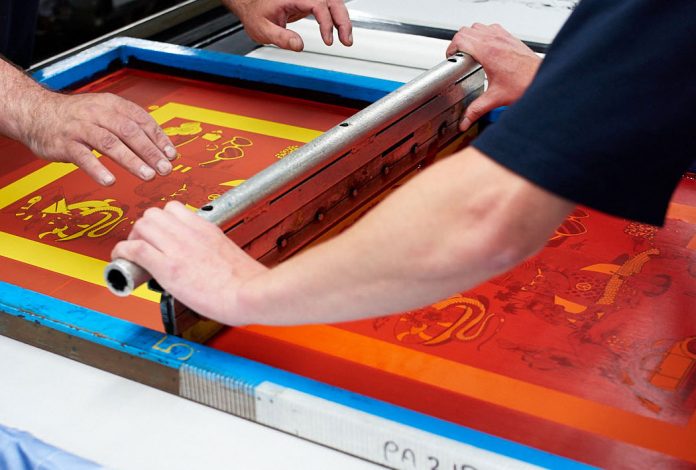Screen printing is a process where colors are transferred onto the surface of a garment with a screen printing process. It can be done on almost any surface and produce high-quality photorealistic designs. After the screen printing process, the printed items can be stacked and packaged for shipping.
Engineering Process
Screen printing near me has evolved throughout the years, including their ways and how the process is done. Screen Printing is an engineering process that involves applying a thin layer of ink to a surface. The ink is pumped through the mesh opening, and capillary action transfers the ink to the surface. The thickness of the mesh and stencil determines the amount of ink deposited on the substrate. After the ink has been transferred, the squeegee moves toward the rear of the screen. The mesh then snaps off the substrate, leaving the ink on the surface.
Controllable
Screen Printing is a process that can be controlled and optimized to create a high-quality final product. Standard operating procedures for screen printing help manufacturers manage their costs and eliminate mistakes. As a result, it can reduce rejects and remakes and increase profits.
Measurable
In screen printing, an ink deposit is measured in microns. This measurement allows you to predict how the ink will spread on the surface. Understanding how the ink spreads is crucial for predicting the behavior of thin coating films.
Consistent
Screen printing requires a perfect setup and consistent printing. Some variables can affect the finished product, including screen tension, dot gain, and flash drying temperature. If these variables are not controlled correctly, the final print will differ.
Cheaper Than Digital Printing
Screen printing is usually cheaper than digital printing when comparing the cost per piece. However, there are some important differences between these two methods. For starters, screen printing requires screens, which must be set up before printing can begin. Additionally, many screen printing companies charge an origination fee to prepare the equipment. In contrast, digital printing does not have an origination fee.
Versatile
Screen Printing is a simple process with a long history and can be used for various purposes. This process can be done manually or with an automated machine. Those who want to practice this method should know that the process can be challenging.
Produces Interesting Effects
Screen Printing is a process that creates interesting effects by applying an emulsion to a printed surface. Screens are made from materials such as polyurethane, silk, and paper. The ink is deposited onto the surface using a printing press. After the print has been created, the screens are washed and cleaned to remove any traces of the emulsion. Larger printworks may use large tubs of special cleaning fluids, or even acid, to remove the emulsion. Smaller printworks may use a sink or a power hose to wash the screens.
Ancient Art Form
Screen Printing is an ancient art form used to create unique designs on various surfaces. It was first developed in China around AD 950. The technique involved using a fine mesh fabric with a pattern or motif. At first, silk thread was used to create the mesh, but now, polyester fabrics are the preferred choice. The mesh fabric can be any thickness to achieve the desired design. The ink is then forced through the screen using a stiff brush. After the printing process, the screen is usually washed and reused.
Automated Process.
The first step in the screen printing process is to prepare the screen and the ink. The material to be printed is placed on a printing board, and the screen is then placed on top. The screen is then lowered to the substrate, and the desired color ink is added to the top. Next, a squeegee is used to press the ink through the screen mesh and onto the material’s surface. The squeegee is typically made of synthetic rubber or polyurethane and has to be flexible enough to move easily from one area to another.
Uses Photosensitizers
Photo sensitizers are chemicals used in screen printing to produce images. The emulsions used for screen printing are liquids. They are dual cure emulsions and pure photopolymer emulsions. For example, different scoop coaters can deposit different emulsions. The sharp edge of the scoop coater will deposit a thinner emulsion, while the rounded edge will deposit a thicker film.

